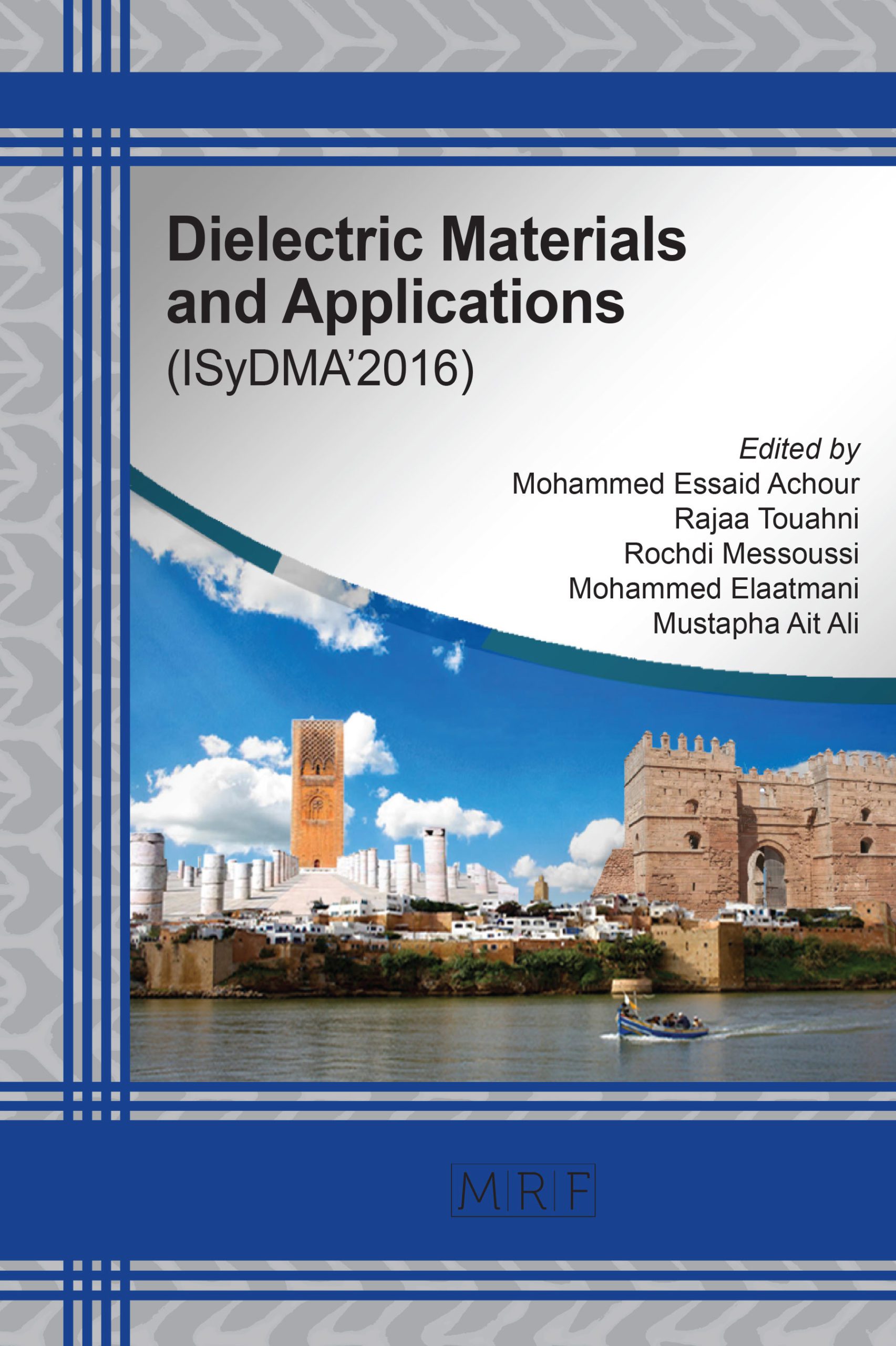S.BOUKHEIR, M.E. ACHOUR, OUERIAGLI, A. OUTZOURHIT, N.ÉBER, L.C. COSTA
Abstract. We have investigated the electrical properties of carbon-nanotubes-loaded DGEBA polymer composites in the frequency range between 1Hz and 10 MHz and temperature range between 25°C and 105°C. The frequency dependence of electrical data have been analyzed in two frameworks: the electrical modulus formalism with the Kohlrausch-Williams-Watts stretched exponential function (KWW) and the electrical conductivity by using the Jonscher’s power law. The stretching exponent βKWW and the Jonscher exponent n are found to be temperature dependent for all carbon nanotubes concentrations and show a very slight variation with increasing the amount of filler percentage at room temperature.
Keywords
Electrical Properties, Relaxation, Impedance Spectroscopy
Published online 12/10/2016, 4 pages
Copyright © 2016 by the author(s)
Published under license by Materials Research Forum LLC., Millersville PA, USA
Citation: S.BOUKHEIR, M.E. ACHOUR, OUERIAGLI, A. OUTZOURHIT, N.ÉBER, L.C. COSTA, ‘Effect of temperature and filler concentration on the electrical parameters of a dispersion of carbon nanotubes in an epoxy matrix’, Materials Research Proceedings, Vol. 1, pp 45-48, 2016
DOI: http://dx.doi.org/10.21741/9781945291197-12
The article was published as article 12 of the book Dielectric Materials and Applications
References
[1] C. McClory, S. J. Chin, and T. McNally, Australian Journal of Chemistry, vol. 62, no. 8. pp. 762–785, 2009. http://dx.doi.org/10.1071/CH09131
[2] Z. Spitalsky, D. Tasis, K. Papagelis, and C. Galiotis, Prog. Polym. Sci., vol. 35, no. 3, pp. 357–401, 2010. http://dx.doi.org/10.1016/j.progpolymsci.2009.09.003
[3] S. Boukheir, A. Len, J. Füzi, V. Kenderesi, M.E. Achour, N. Éber, L. C. Costa, and A. Outzourhit., J. Appl. Polym. Sci. 133, 44514, 2016.
[4] K. S. N. A.K. Geim, Nat. Mater., vol. 6, pp. 183–191, 2007. http://dx.doi.org/10.1038/nmat1849
[5] “WinData and Winfit are software trademarks of Novocontrol.” http://www.novocontrol.de/html/winfit.htm , (accessed June 2016).
[6] J. Trzmiel, K. Weron, J. Janczura, and E. Placzek-Popko, J. Phys. Condens. Matter, vol. 21, no. 34, p. 345801, 2009. http://dx.doi.org/10.1088/0953-8984/21/34/345801
[7] Z. Zallen, The Physics of Amorphous Solids. New York: Wiley, 1985.
[8] A. K. Jonscher, J. Phys. D. Appl. Phys., vol. 32, no. 14, pp. R57–R70, 1999. http://dx.doi.org/10.1088/0022-3727/32/14/201
[9] A. K. Jonscher, IEEE Trans. Electr. Insul., vol. 27, no. 3, pp. 407–423, 1992. http://dx.doi.org/10.1109/14.142701
[10] J. N. Jain, H.; Mundy, Solid State Ionics, vol. 91, pp. 3–15, 1987.































